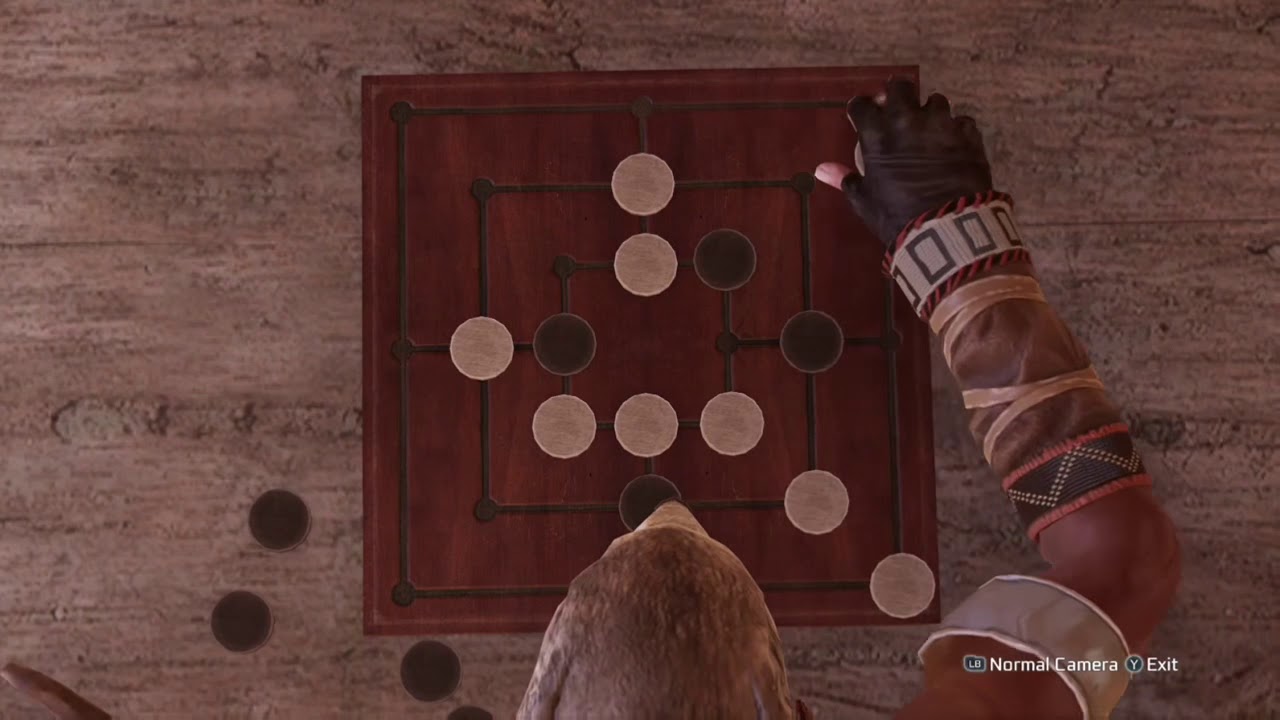Nine Men’s Morris: Rules and Strategies
For the last several months, I’ve been a bit obsessed with a game called Nine Men’s Morris. Like a lot of other people before me, I first learned of the game from playing it in one of the mini-games in Assassin’s Creed IV: Black Flag. In this post, I’ll share the rules of the game and some strategies I’ve picked up along the way.

Where it all started for me.
Here are some things I really like about Nine Men’s Morris:
The rules are simple, so teaching it to a friend doesn’t take very long. Even my three-year-old understands the mechanics and enjoys a game with me or his siblings.
While it does require some strategy, it doesn’t require the same level of foresight, planning, and brainpower as chess.
Historical Note
Nine Men’s Morris has been played for thousands of years; it is at least as old as the Roman Empire and was popular among Roman soldiers. It also may have been played as far back as 1400 BC in Egypt.[1]
Nine Men’s Morris is also known as:
Nine-Man Morris
Mill
Mills
The Mill Game
Merels
Merrills
Merelles
Marelles
Morelles
Ninepenny Marl
Cowboy Checkers
Basic Gameplay
A blank Nine Men’s Morris board with position notations.
The objective of the game is to do one of the following:
Capture enough of your opponent’s pieces that they only have 2 left. You capture an opponent’s piece each time you form a mill.
Position your pieces such that your opponent has no more valid moves (all their pieces are trapped).
Gameplay consists of three main phases:
Placement Phase: Players take turns placing a piece on the board, starting with whichever player’s pieces are white (or lighter in color).
Movement Phase: After both players have placed all nine of their pieces on the board, each player’s turn consists of them moving a piece along a line from one position on the board to an adjacent position.
Fly Mode: An individual player reaches fly mode when they only have three pieces left, at which point they no longer need to move pieces to an adjacent position. Rather, they can jump (or “fly”) to any unoccupied position on the board.
Important
Only the player with 3 pieces left enters Fly Mode, not both!
Fly mode plays an important role in balancing the game. Since the player in fly mode will lose the next time their opponent makes a mill, having this extra ability gives them more of a fighting chance at avoiding defeat.
Game Terms
- Mill
Three pieces in a row along a single line on the board. Creating a mill at any point in the game (including the Placement Phase) permits you to remove one of your opponent’s pieces from the board, provided:
The piece you remove is not part of a mill, or
If all of your opponent’s pieces are part of a mill, you can remove any piece.
Hint
You can re-form a mill any number of times in a game. Arranging your pieces so that you are re-forming mills with every move is a very powerful position to be in!
- Position
A location on the board indicated by a circle. Positions are the only valid places for pieces during gameplay. Only one piece can occupy any position at a time.
- Adjacent Position
Any two positions on the board are considered adjacent if they are connected by a line.
Game Strategies
Come Back Soon!
I will post details on strategies soon.
FAQ
Can a mill wrap around a corner?
No, pieces making a mill must all be along a single straight line.
Where does the word “Morris” come from?
The Latin word merellus means ‘gamepiece’, which may have been corrupted in English to ‘morris’, while miles is Latin for ‘soldier’.[1]